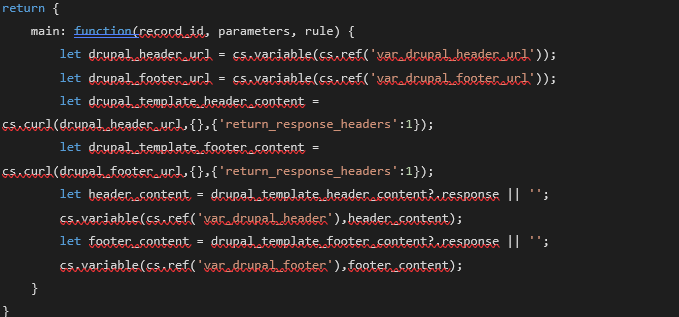Hey everyone,
As a demonstration of our ongoing commitment to Local Government, Netcall was delighted to announce that we were the first supporting partner of LocalGov Drupal back in 2022.
Our partnership with LGD builds on our shared vision of delivering better digital citizen services and giving councils the tools to achieve this and is testament to the power of constructive collaboration, teamwork and shared vision.
Did you know that research from Digital Health Check reveals that Drupal is now the preferred CMS of UK councils?
What have we at Netcall been up to
Since the Partnership was announced a collective working group (let us know if you wish to join ![]() ) have been working behind the scenes around how to use LocalGov Drupal Content alongside data and information within the Liberty Platform, primarily Liberty Create and Liberty Converse.
) have been working behind the scenes around how to use LocalGov Drupal Content alongside data and information within the Liberty Platform, primarily Liberty Create and Liberty Converse.
We have many mutual users of the respective platforms, integrating Liberty with LocalGov Drupal to create great, seamless services and we continue to look for ways to improve the benefits our customers get from using both platforms together.
There will be more to follow, but one of the common needs is around styling Liberty Create applications, particularly around page headers and footers, based on the great work done by LocalGov Drupal content designers and UI/UX specialists.
The team at Croydon Council led the charge on this and have produced some very useful guidance around how quick and simple it can be to use LocalGov Drupal styling in your Liberty Create applications.
**Here are some steps to follow **
(thanks to the team at Croydon Council)
Within LocalGov Drupal:
- Establish the Drupal endpoints (Install relevant Github module)
Within Liberty Create:
-
Create a ‘public’ Theme to use in the ‘basics’ tab of your public facing webpages (you’d probably also have an ‘internal’ theme for back office interfaces).
-
Create early and late stylesheets for the theme (i.e. css)
-
Create the Themepack to be used for the theme (this is the code that’ll bring in the header and footer – an example can be provided on request)
-
Create 4 variables:
-
Drupal Header (this will store the raw HTML from the Drupal API as a string)
-
Drupal Header URL (this is Drupal endpoint URL that is called to populate the ‘Drupal Header’ variable)
-
Drupal Footer (this will store the raw HTML from the Drupal API as a string)
-
Drupal Footer URL (this is Drupal endpoint URL that is called to populate the ‘Drupal Footer’ variable)
-
Create code studio references for each variable (e.g. ‘var_drupal_header’, ‘var_drupal_header_url’, etc)
-
Create a code studio event action that will call the API, here’s the required code (note the references):
- Create a signal to fire this event action using ‘Global action’ setting. Set the schedule for the signal – e.g. twice a day (or more frequently if lots of changes to the header and footer are required). Also tick ‘Trigger – manual’ setting to allow the signal to be able to be fired manually to initially populate the variable
The LocalGov Drupal community understands the need to deliver high-quality, user-friendly services for the public while managing tight budgets.
If you need any help, please do not hesitate to get in touch with us here at the Netcall Community !
thanks ![]()
